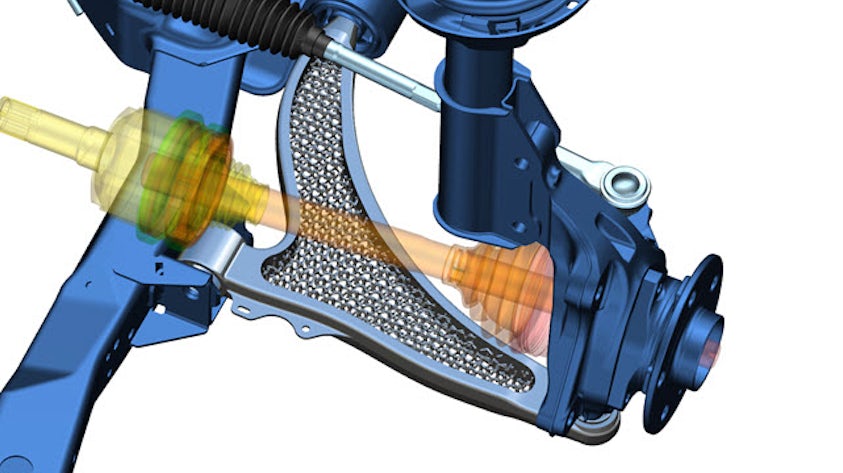3D-Modelle stellen ein physisches Objekt oder einen Körper mithilfe einer Sammlung von Punkten im Raum dar und sind durch verschiedene geometrische Elemente wie Linien, Dreiecke, gekrümmte Oberflächen usw. miteinander verbunden. 3D-Modelle sind eine Sammlung von Datenpunkten und können manuell, algorithmisch oder mithilfe von Scansoftware auf ihren Oberflächen erstellt und mit Textur-Mapping weiter definiert werden.
3D-Modellierung beschreibt die Verwendung von Softwarewerkzeugen, wie z. B. CAD-Programmen (Computer-Aided Design), um digitale 3D-Darstellungen von Objekten zu erstellen. Zu den Berufen, in denen 3D-Modellierung zum Einsatz kommt, gehören die Entwicklung von Konsumgütern, das Automobildesign, die Herstellung von Industrieanlagen, die Architektur, das Design, das Ingenieurwesen, die Unterhaltungs- und Spieleindustrie sowie das Gesundheitswesen.
3D-Modellierungssoftware bezieht sich auf Softwarewerkzeuge, die zur Erstellung dreidimensionaler Modelle von Objekten oder Szenen verwendet werden. 3D-Modellierungssoftware kann für verschiedene Zwecke verwendet werden, die über das Ingenieurwesen und das technische Design hinausgehen, einschließlich Animation, Spiele, Film, Architektur und Produktdesign. Diese Werkzeuge ermöglichen es Benutzern, 3D-Geometrie mit einer Vielzahl von Modellierungstechniken wie polygonaler Modellierung, NURBS-Modellierung, Sculpting und prozeduraler Modellierung zu erstellen, zu bearbeiten und zu visualisieren.
Die Grundlage von 3D-Modellen
Obwohl komplexe mathematische Formeln die Grundlage von 3D-Modellierungssoftware bilden, automatisieren die Programme die Berechnungen für den Benutzer und verfügen über werkzeugbasierte Benutzeroberflächen. 3D-Modelle sind ein Ergebnis der 3D-Modellierung und basieren auf einer Vielzahl von digitalen Darstellungen. Bei der Begrenzungsdarstellung (B-rep) werden mathematisch definierte Flächen wie Kegel, Kugeln und NURBS (Non-Uniform Rational Basis Spline) verwendet, die durch eine Topologie verbunden sind, um Objekte genau als wasserdichte Volumina darzustellen. B-rep-Modelle sind die bevorzugte Lösung für das Engineering, und viele 3D-Modellierungsanwendungen für das Design, die Simulation und die Herstellung von Konsumgütern und Industrieprodukten basieren auf B-rep. Facettenmodelle approximieren Oberflächen mithilfe verbundener planarer Polygone und sind die bevorzugte Lösung für weniger präzise Hochgeschwindigkeits-Formdarstellungen, die in Spielen, Animationen und digitalen Modellen verwendet werden.
Virtuelle 3D-Modellierung
Virtuelle 3D-Modelle können durch 3D-Druck oder traditionelle Fertigungsverfahren in physische Objekte umgewandelt werden. Modelle können auch durch 3D-Rendering in statische Bilder umgewandelt werden, die häufig zur Erstellung fotorealistischer Darstellungen für Vertriebs-, Marketing- und E-Commerce-Anwendungen verwendet werden. 3D-Modelle können durch den Prozess des Reverse Engineering erstellt werden, bei dem die 3D-Scantechnologie verwendet wird, um digitale Nachbildungen realer Objekte zu erstellen, einschließlich gefertigter Teile und Baugruppen, Freiformmodelle, die aus Ton und menschlicher Anatomie entworfen wurden. Moderne Anwendungen der 3D-Modellierung erzeugen und interagieren mit einem "digitalen Zwilling", mit dem sein reales Gegenstück im Rahmen des Produktlebenszyklus entwickelt, getestet, simuliert und hergestellt wird.
Funktionen innerhalb der 3D-Modellierung
Die Visualisierung Ihres Produkts aus jedem Blickwinkel vor der Herstellung oder Präsentation vor Kunden ist bei weitem der größte Vorteil der 3D-Modellierung! Mit der 3D-Modellierung können Sie jede Komponente Ihres Produkts, die Stil, Abmessungen, Farben und Formen repräsentiert, virtuell erstellen und anzeigen, um Ihr Produkt vor der Herstellung zum Leben zu erwecken. Die 3D-Modellierung hilft bei der Anpassung und Personalisierung von Produkten für Kunden.
3D-Modellierungssoftware bietet zahlreiche Vorteile in verschiedenen Branchen und Anwendungen.
Verwandte Produkte: NX CAD
